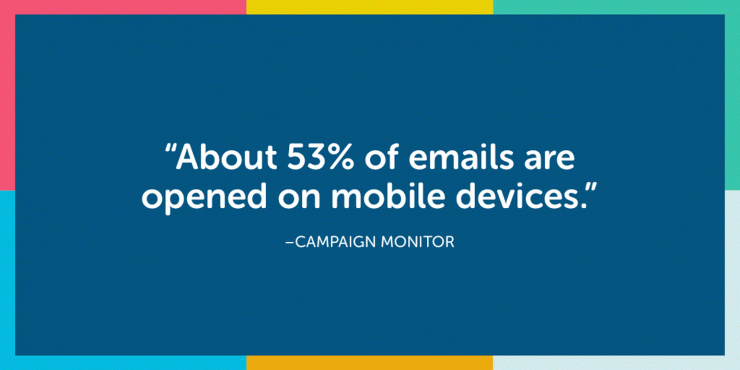Writing marketing emails often requires you to say a lot with a little.
Easier said than done.
Think about when you read your emails. How much time do you give each email you open?
On average, a business user receives 120 email per day (source) and that number is expected to rise in the next few years. Email subscribers have a short attention span when looking at marketing campaigns, especially when they’re mixed in with business emails.
Here are 10 tips to help you write more successful email campaigns:
1. Determine Your Primary Goal
What are you hoping to accomplish by sending out the email? Determine the primary goal as well as a secondary (if any) before you begin to write.
2. Know Your Audience
If you’re unsure who you are writing to, your copy might end up sounding generic. Have a persona in mind when writing email content.
What is a persona?
If your audience was a single person, describe them as if you knew them personally. You might want to include:
- Name
- Gender
- Age
- Likes/Dislikes/Hobbies
- Personality
- Values
Example: Say that your persona profile is named Lisa. Lisa values time with their family above all else. You can then cater your content towards product features that save Lisa time, resonating with one of her personal values.
Knowing who you are writing to will make it much easier to write compelling, relevant copy.
3. Second or Third Person Point of View
A part of your brand’s strategy should include writing style. There are two primary perspectives you can use:
Second Person
Uses you, your and yours.
Third Person
Uses he, she, it, and they.
This article is written directly to you, the reader. It’s considered a second person point of view. Third person is more formal and not as personal as second person. Neither is wrong or right, but it is important to choose one and stick with it throughout your email.
4. Start with an Outline
This article started out with 10 bullet points. Once those were written out, I filled in the blanks. It’s much easier to write when you have your primary goal in mind and an outline of key points you want to get across to your subscribers.
5. Use Headings
Once you have your outline written, start by writing headings that summarize different areas of your email. Headings make large areas of copy easy to scan and feel shorter than it really is.
6. Short and Sweet
- Don’t include more than three short to mid-sized sentences in a paragraph. When in doubt, start a new paragraph.
- Bulleted and numbered lists are great ways to communicate a lot while making it easy to scan
- If you’re writing copy for an email that does not include images, it’s a good idea to have at least 500 characters of copy to avoid getting caught in SPAM filters
7. Use a Large Enough Font Size
Consider where your audience will be reading your emails.

Make sure your font size is large enough to be read on a smartphone or tablet. Having a responsive or mobile-friendly email is a good first step to catering to your mobile readers.
There isn’t a hard-and-fast rule on what font size you should use due to the fact that every font renders slightly different than the next. A good range to shoot for is 16px–22px.
There’s no sense in writing an email at all if the copy is too small to be read easily.
8. Focus on Value and Benefits
Is the primary goal of your email campaign to sell your goods or services? It is easy to come off too sales-driven.
Most subscribers sign-up for a newsletter because they hope to benefit from it in some way. If you’re promoting your products, focus on the benefits your products will provide your subscribers.
Look back at your brand persona. What benefits would help to solve Lisa’s problems?
9. Check Your Spelling and Grammar
These days it’s hard to find a program that doesn’t have spellcheck automatically reviewing your copy as you write. Getting used to spell check makes it even easier to overlook mistakes that are spelled properly such as writing “shoes” instead of “shows” or grammar mistakes like “they’re” instead of “their”.
Spelling and grammar mistakes can also be offensive when you’re dealing with multi-lingual campaigns.
Don’t hurt your brand by failing to read over your copy.
10. Another Set of Eyes
After you’ve reviewed your copy, have at least one other person look things over. If you don’t have anyone else to help you out, start reading your copy one sentence at a time from the end. Reading email copy out of context can help you catch more errors.
Conclusion
Email copywriting is an art. It’s not always easy to say a lot with a little. Now that you’ve determined your goal, considered your target audience and wrote an outline and reviewed your work, you should be ready to hit your email marketing goals.
Happy Emailing!
Looking for ways to write compelling content that stands apart from your competitors?
Check out a related article: How to Stand Out in a Sea of Content
Source: The Radicati Group, Inc., Email Stats Report 2014–2018





